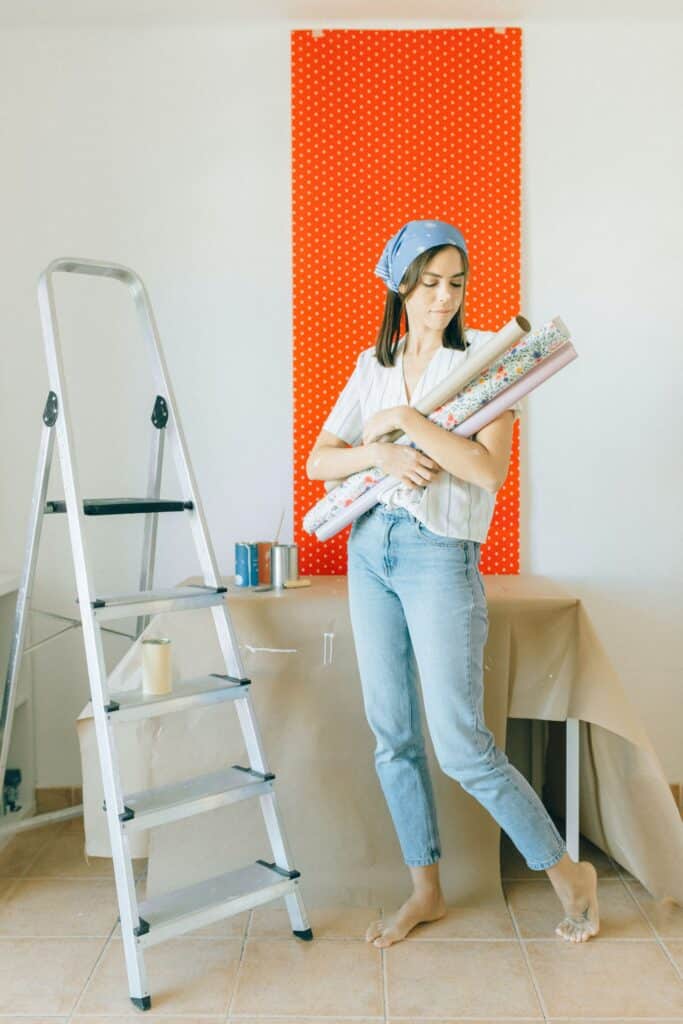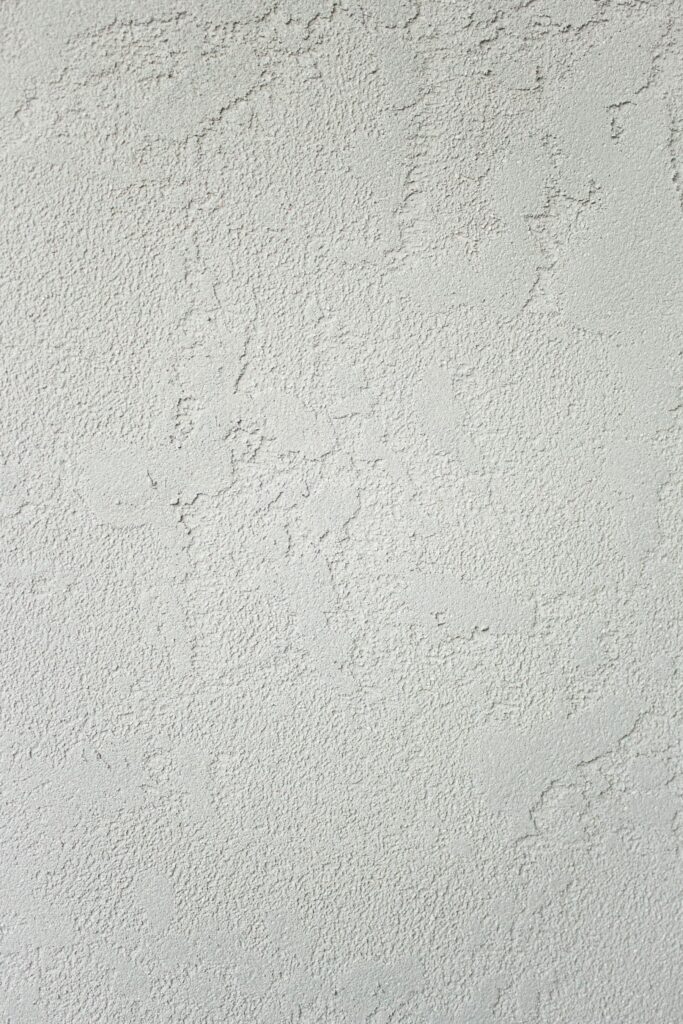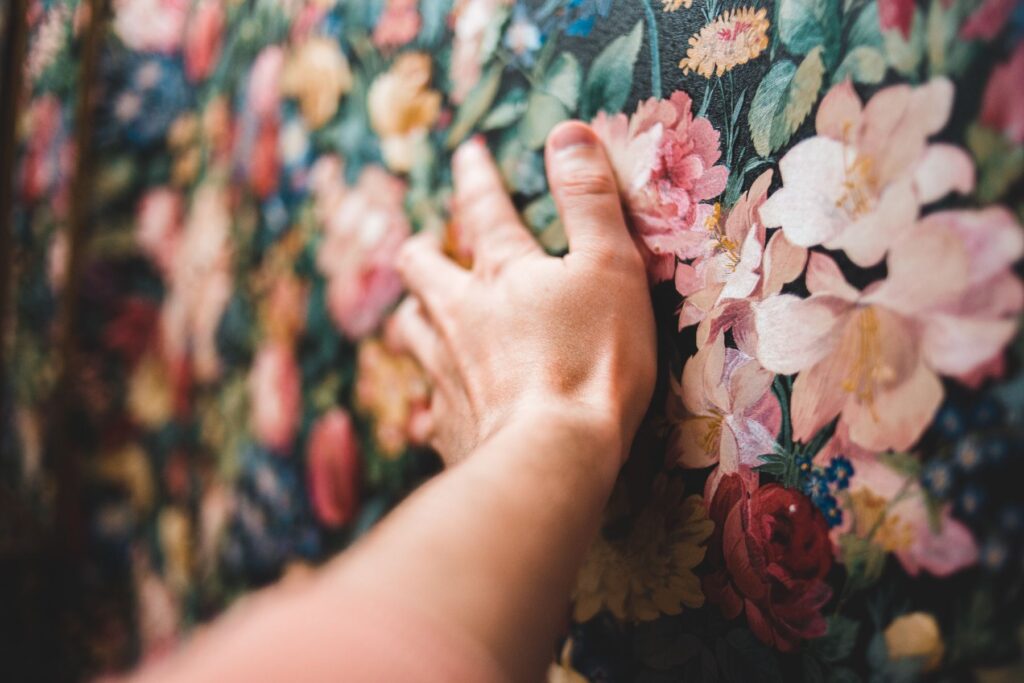It’s an ugly job, and while we can’t make it pretty to remove wallpaper, we can make it easier.
As painting and old wallpaper removal experts, the team at Culver’s Painting has more experience in how to remove wallpaper than we might like to admit. It’s a dirty job, but for homeowners or business owners ready for a new look and fresh paint, it’s a necessary one.
This step-by-step guide to removing wallpaper and wallpaper adhesive approaches the project from our standpoint: how the professionals do it for a picture-perfect finish, AND how to prepare the entire room for new paint.
It’s a lot of work, and it’s messy, but the right process will make it go a whole lot smoother.

How To Remove Wallpaper: The Basics
For those who’ve never tackled wallpaper, there’s more to it than just ripping it down and painting.
Wallpaper adhesive can be incredibly stubborn, and depending how well your wallpaper or wallpaper backing was applied 20 or 100 years ago(!), old paper can be darn tough to get off.
Here’s the number one thing to know: while many people reach for a spray bottle of wallpaper stripper or a chemical stripper, a wallpaper steamer is absolutely the best way to remove wallpaper. While it might feel slower, you’ll have better luck getting all the paper and paper backing. We’ve genuinely tried it all, and a steamer is where to start.
With the right tools (read: steam removal!) you can do it yourself, though some help is handy.
Even for a single master bathroom or living room removal project, we generally send a team of three professionals who will complete the removal project in 1-2 days, including removing the paper layer, cleanup, wall repairs, and two coats of paint. For large projects, we sometimes send eight team members at a time who can tackle a whole house in a week!
Read on to decide if DIY removing wallpaper is for you – or if it’s worth subbing out to the pros.
How to Take Off Wallpaper Like A Pro
1. Clear and Prepare the Room for Wallpaper Removal
It’s ideal to remove wallpaper in an empty house: before or after moving out. There’s often considerably less prep work when furniture is already out and floor coverings won’t get in the way or risk a mess.
Still, whether an empty house or not, we begin every project by putting down a drop cloth or drop cloths and masking all floors with paper and painter’s tape. That also includes covering all baseboard trim to catch adhesive residue, warm water, and wallpaper bits & pieces.
This is perhaps the most important step to a beautiful final product. Wallpaper removal can be a pretty damp process, and we take great care to keep your wood from getting wet with a good soak. Proper masking with plastic and paper is crucial. Be careful to cover and protect any surface you care deeply about.
Remove all outlet covers and light switch covers, which generally sit over top of the wallpaper and are sometimes covered with wallpaper themselves, and light fixtures that might get in the way.
2. Use A Wallpaper Steamer
Let’s get into it.
Skip the wallpaper stripper, gel stripper, or scoring tool to begin: rent, buy, or borrow a professional grade wallpaper steamer instead.
These devices look like a vacuum and work by using steam to soften the adhesive that binds the wallpaper to the wall, allowing for easier and more efficient removal.
A wallpaper remover has a water reservoir which is heated until it boils, producing steam. The steam is directed through a hose to a large flat plate with a handle in the middle. This plate is held against the wall, allowing the steam to penetrate the wallpaper.
Hold the steamer plate against the wallpaper for 30 seconds. Pull it away from the wall and test whether the wallpaper glue has loosened up. If the wallpaper isn’t budging, try 60 seconds to 2 minutes of continuous steam. Most traditional wallpaper will peel off easily with gentle pressure after being steamed for 30 to 60 seconds in one spot.
Start from the top with your steamer; gravity and dripping hot water from the steamer will help the lower sections of wallpaper come loose. Work your way down the wall, pulling sections loose as you go. Remember that wallpaper is usually applied in strips of 18 to 36 inches in width, meaning you’ll be removing the paper surface in long vertical stripes. Continue around the room, beginning near the ceiling with each section.
When Steam and Hot Water Doesn’t Work…
80% of the time a wallpaper steamer works wonderfully!
When it doesn’t, our team switches to a chemical stripper or spray solution, scoring tools, a damp sponge, and warm water. Use a scoring tool to penetrate the wallpaper (this can be particularly helpful with vinyl wallpaper), then spray or sponge on the chemical stripper. Use a putty knife to scrape the wallpaper gently from the wall, trying not to damage the underlying plaster or drywall when possible.
Scrape gently to begin. As you go, you’ll learn the nuances of your particular room and wallpaper, and you’ll figure out the best way to remove wallpaper in your situation.
Chemical strippers are generally a last resort, but they can be necessary!
Wallpaper Steamer and Removal Tips:
- Because steam produces condensation, you’ll inevitably have moisture running down the wall. Keep a few sponges on hand to sop up the bulk water and make clean-up a little easier. The room should also be well-ventilated, as the process can raise humidity levels significantly.
- It’s helpful to have a partner who can pull on the wallpaper as you steam, pick up bits and pieces, remove trash and waste as the project progresses, and generally keep the process moving while you stand on the ladder with your steamer.
- New wallpaper from the last ten years generally comes off more easily than old wallpaper! That’s thanks to newer glues and adhesives. Peelable wallpaper and strippable wallpaper have also gained popularity in recent years.
- Handle the steamer with care. The steam can cause burns if it comes into contact with your skin.
Will a steamer work on multiple layers of wallpaper?
Sometimes multiple layers of wallpaper will all come off at once with steam removal – that’s the hope anyway. Other times, just the top layer comes off, and you must go back around with a second pass to remove the entire wall.
3. Repair and Mud the Walls Smooth
Congratulations, the worst part is over! With the room clean, it’s time to prepare and smooth the surface for a new coat of paint.
When we tackle a freshly cleaned wall, we next spend time repairing small holes or dents and dings in plaster walls or drywall before we mud and skim coat with joint compound where necessary. Even if you plan to apply new wallpaper, you still want to look for major damage to the underlying surface.
Wallpaper was commonly used to mask underlying issues with the surface, so be vigilant.

4. Oil prime the Whole Room.
It’s time to prime.
With your wallpaper gone, you may find that there’s a light layer of “scum” remaining on the wall – this is likely the original glue. While you should work to scrape and remove bulk glue, this next step will resolve most of the issue.
We apply an oil-based primer to every wall, which seals the glue in and creates a fresh “tooth” for the new paint, ensuring that it can stick properly without issue.
We almost always use an oil primer, as latex paint can actually bubble when it reacts with old wallpaper glue!
If the drywall is still rough or imperfect, we may also apply a coat of sand texture paint. This is a type of decorative paint that contains fine particles, often resembling sand, to give walls and ceilings a rough, textured appearance. It’s common when painting older homes in Milwaukee, and you may already have sand paint in your house. About 50% of the wallpaper jobs we do end up with sand paint.
Let your primer dry for a half-day to a day before painting.
5. Apply a First Coat of Paint
It’s time for the first coat of your chosen paint.
After we apply the first coat, we examine all walls once again for any signs of remaining imperfections – particularly issues that we can resolve with some spackling or where wallpaper glue may have peeked through. We remedy any issues before applying a final coat of paint.
6. Apply a Second Coat of Paint
Finally, we apply a second, top coat of finish paint.
Notably, professional painters almost always apply paint with a professional sprayer, which creates an even, uniform texture and a “like-new” feel. This requires additional masking and taping, but it’s well worth the effort and will hold up for years to come.
7. Clean Up
With the project done, our team puts your room or home back how we found it. Furniture is returned, your space is clean, and you can get back to comfortable living in your new space.
No mess, no hassles.
Other Methods and Tips for Extra Stubborn Wallpaper
Use Wallpaper Stripper on Tough Paste
Available at any home improvement store, these chemical products work by destroying the bonds that hold wallpaper glue in place. They’re a mess and are generally our last resort, but they can work alongside a putty knife for those extra tough spots.
Common Questions About Wallpaper Removal
Can I just pull wallpaper off?
Try it!
Modern strippable wallpaper comes right off, but that’s probably not why you’re here.
The amount of work really depends how well it was applied originally and what type of glue was used.
Homeowners also often find that the top layer of wallpaper, as the newest, comes right off, but that lower layers require some elbow grease.
How much does professional wallpaper removal cost?
To simply paint a single bedroom is generally around $650-850 for professional painting in Milwaukee.
When you add in wallpaper removal the price will typically increase 2.5x-3x due the intensive labor and process involved.
Check out our other resource for more details on professional painting prices.
How long does it take to remove wallpaper?
A standard bedroom with wallpaper with one person may take a week of work to strip and repaint.
Our standard 3-person crew will get it done in as little as 1-2 days.
Can I use soap to remove wallpaper?
Some people swear by simple dish soap and even fabric softener for removing wallpaper, but we’ve found that nothing compares to a first pass with a good steamer.
How To Remove Wallpaper? Unpeel the Hassle by Outsourcing to The Pros
Why spend days on end ripping at wallpaper when you can have a fresh start sooner?
At Culver’s Painting, we’ve mastered the art of swift and seamless wallpaper removal. Give your walls the makeover they deserve without lifting a finger. For a truly hassle-free wallpaper removal process in Milwaukee, we can help.
We offer reduced rates on removing wallpaper in Milwaukee and the surrounding area during the winter months (our off-season) and for empty houses (often before you move in). Call to learn more and get a free quote!










